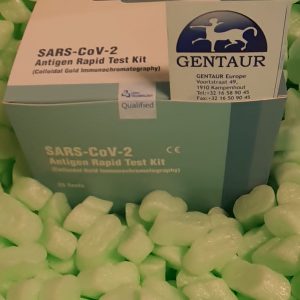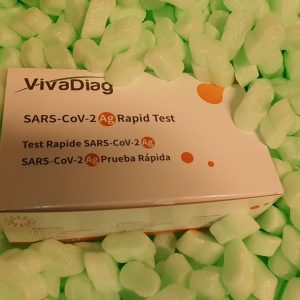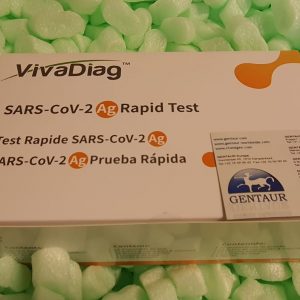Fruits are a significant supply of diet in human diets, offering carbohydrates, fiber, nutritional vitamins and phytonutrients. Carotenoids are a principal class of compounds discovered in lots of fruits, offering dietary advantages each as precursors to important nutritional vitamins and as antioxidants.
Molecular characterization revealed that the tomato excessive pigment mutant genes (hp1 and hp2) encode UV-DAMAGED DNA BINDING PROTEIN–1 (DDB1) and DE-ETIOLATED-1 (DET1) homologs, respectively, and each are important parts of the lately recognized CUL4-based E3 ligase advanced. Here now we have remoted a tomato CUL4 homolog and carried out yeast two-hybrid assays to counsel attainable affiliation of tomato DDB1 with CUL4 and DET1. Real-time RT-PCR evaluation indicated that each HP1 and CUL4 are expressed constitutively. Abscisic acid is implicated in plastid division management and its utility considerably enhances HP1/DDB1 mRNA accumulation.

Transformation of constructs expressing CUL4-YFP and DDB1-YFP fusion proteins pushed by the CaMV 35S promoter reveals that each CUL4 and DDB1 are focused to tomato plastids and nuclei concurrently. Using fruit-specific promoters mixed with RNAi know-how, we present that downregulated DDB1 expression in transgenic fruits leads to a major improve in the quantity of plastids and corresponding enhanced pigment accumulation.
CUL4-RNAi repression strains present perception concerning CUL4 operate throughout tomato growth, and reveal that this tomato cullin is vital in the regulation of plastid quantity and pigmentation, which in flip have a direct affect on fruit nutrient high quality.
The SCF (Skp1–cullin-F-box proteins), also called CRL (cullin-based RING ligase), is the largest household of E3 ubiquitin ligases that mediate roughly 20% ubiquitinated protein substrates for 26S proteasome degradation.
Through selling well timed degradation of many key regulatory proteins, SCF E3 ligase controls quite a few mobile processes; its dysfunction contributes to a quantity of human ailments, together with most cancers. The RING element of SCF advanced consists of 2 relations, RBX1 (RING field protein1), also called ROC1 (regulator of cullins), and RBX2/ROC2 (also called SAG [sensitive to apoptosis gene]), each of which are important for the catalytic exercise of SCF.
RBX1 and RBX2 are evolutionarily conserved from yeast to people and play an important position throughout mouse embryonic growth. Moreover, RBX1 and RBX2 are each overexpressed in a number of human most cancers tissues and required for the development and survival of most cancers cells.
In this assessment, we are going to focus on the similarities and variations between 2 RING relations, their regulation of SCF E3 ligase exercise, and their position in growth, most cancers cell survival, and pores and skin carcinogenesis, together with a quick dialogue of RBX-SCF E3 ligases as the most cancers targets and a lately found small molecule inhibitor of SCF E3 ligases as a novel class of anticancer medication.
Multiple Skp1-related proteins in Caenorhabditis elegans: numerous patterns of interplay with Cullins and F-box proteins
The ubiquitin-proteasome pathway of proteolysis controls the abundance of particular regulatory proteins. The SCF advanced is a kind of ubiquitin-protein ligase (E3) that contributes to this pathway in lots of organic techniques. In yeast and mammals, the SCF advanced consists of frequent parts, together with Skp1, Cdc53/Cul1, and Rbx1, in addition to variable parts often known as F-box proteins. Whereas just one purposeful Skp1 gene is current in the human genome, the genome of Caenorhabditis elegans has now been proven to include at least 21 Skp1-related (skr) genes.
The biochemical properties, expression, and operate of the C. elegans SKR proteins have been examined.RESULTSOf the 17 SKR proteins examined, eight (SKR-1, -2, -3, -4, -7, -8, -9, and -10) have been proven to work together with C. elegans CUL1 by yeast two-hybrid evaluation or a coimmunoprecipitation assay in mammalian cells. Furthermore, SKR proteins exhibited numerous binding specificities for C.
elegans F-box proteins. The tissue specificity of expression of the CUL1-interacting SKR proteins was additionally various. Suppression of skr-1 or skr-2 genes by double-stranded RNA interference resulted in embryonic dying, whereas that of skr-7, -8, -9, or -10 was related to gradual development and morphological abnormalities.CONCLUSIONSThe a number of C. elegans SKR proteins exhibit marked variations of their affiliation with Cullins and F-box proteins, in tissue specificity of expression, and in phenotypes related to purposeful suppression by RNAi.
At least eight of the SKR proteins could, like F-box proteins, act as variable parts of the SCF advanced in C. elegans.
Polymorphisms of CUL5 are related to CD4+ T cell loss in HIV-1 contaminated people
Human apolipoprotein B mRNA enhancing enzyme, catalytic polypeptide-like 3 (Apobec3) antiretroviral elements trigger hypermutation of proviral DNA resulting in degradation or replication-incompetent HIV-1.
However, HIV-1 viral infectivity issue (Vif) suppresses Apobec3 exercise by way of the Cullin 5-Elongin B-Elongin C E3 ubiquitin ligase advanced. We examined the impact of genetic polymorphisms in the CUL5 gene (encoding Cullin 5 protein) on AIDS illness development in 5 HIV-1 longitudinal cohorts. A complete of 12 single nucleotide polymorphisms (SNPs) spanning 93 kb in the CUL5 locus have been genotyped and their haplotypes inferred.
A phylogenetic community evaluation revealed that CUL5 haplotypes have been grouped into two clusters of evolutionarily associated haplotypes. Cox survival evaluation and combined results fashions have been used to evaluate time to AIDS outcomes and CD4(+) T cell trajectories, respectively. Relative to cluster I haplotypes, the collective cluster II haplotypes have been related to extra fast CD4(+) T cell loss (relative hazards [RH] = 1.47 and p = 0.009), in a dose-dependent trend.
This impact was primarily attributable to a single cluster II haplotype (Hap10) (RH = 2.49 and p = 0.00001), probably as a result of differential nuclear protein-binding efficiencies of a Hap10-specifying SNP as indicated by a gel shift assay. Consistent results have been noticed for CD4(+) T cell counts and HIV-1 viral load trajectories over time.
The findings of each purposeful and genetic epidemiologic penalties of CUL5 polymorphism on CD4(+) T cell and HIV-1 ranges level to a job for Cullin 5 in HIV-1 pathogenesis and counsel interference with the Vif-Cullin 5 pathway as a attainable anti-HIV-1 therapeutic technique.




